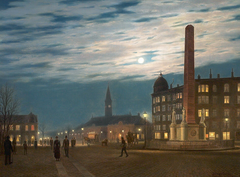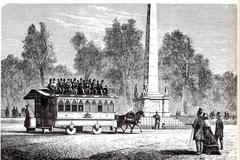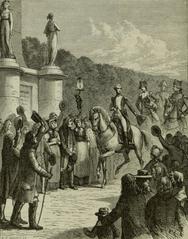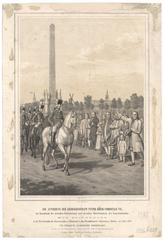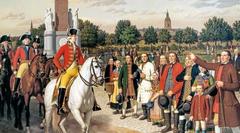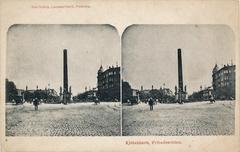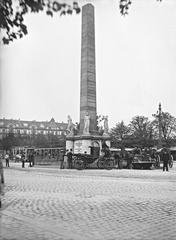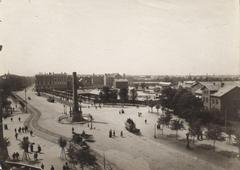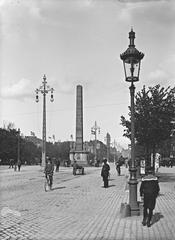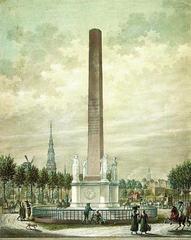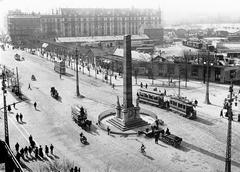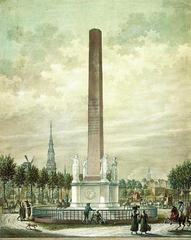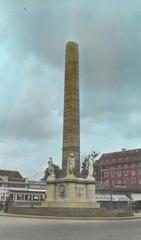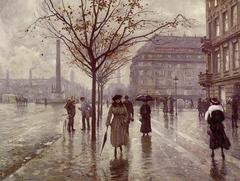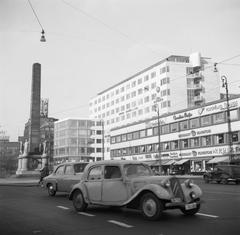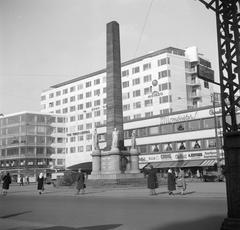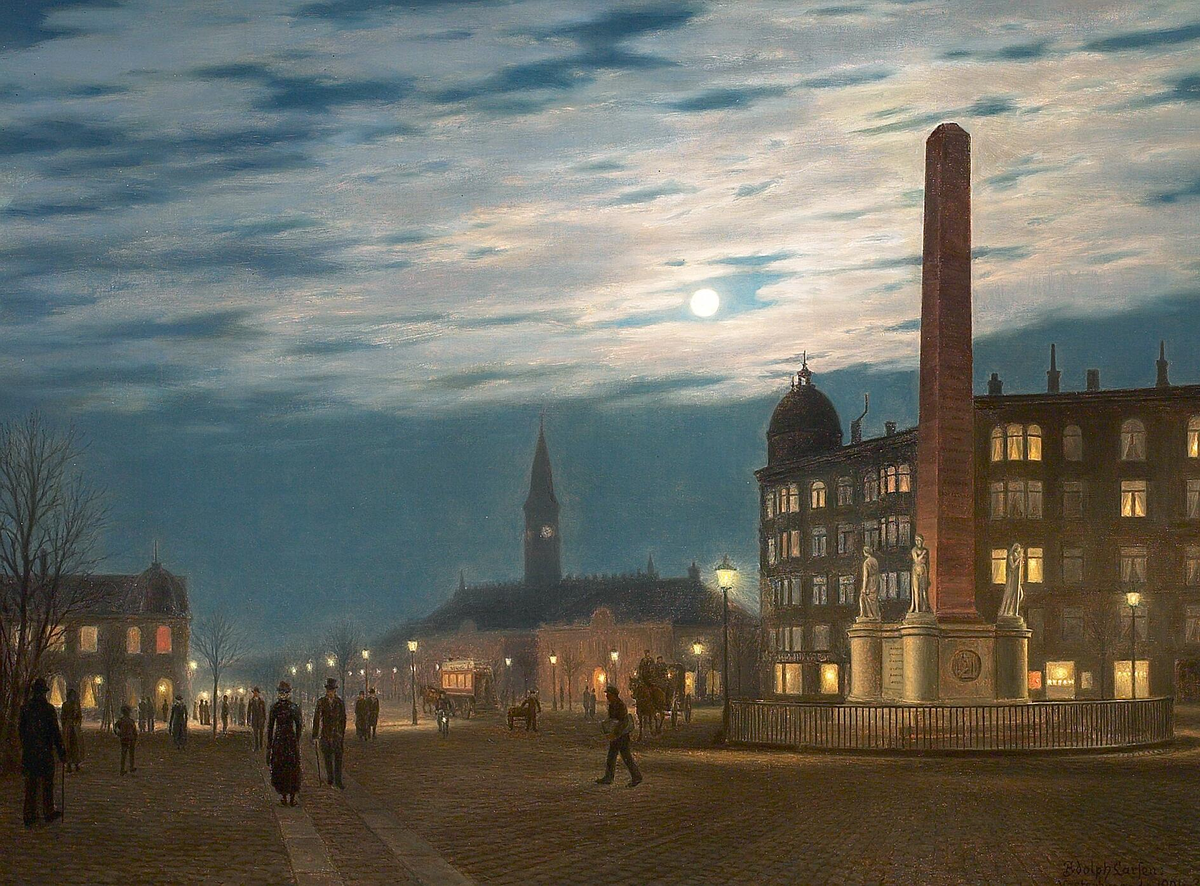
Liberty Column Copenhagen: Visiting Hours, Tickets, and Historical Sites Guide
Date: 14/06/2025
Introduction
The Liberty Column (Frihedsstøtten) is one of Denmark’s most significant monuments, standing prominently on Vesterbrogade opposite Copenhagen Central Station. Erected in 1797, it celebrates the abolition of the stavnsbåndet (adscription) in 1788—a landmark moment that ended the legal bondage of Danish peasants to their birth estates. The Liberty Column embodies Enlightenment ideals, symbolizing Denmark’s peaceful journey toward social reform and democracy. This comprehensive guide delves into the monument’s origins, symbolism, architectural features, historical context, and practical visitor information—including visiting hours, accessibility, nearby attractions, and tour options—making it an essential resource for history enthusiasts and travelers alike.
Official sources for more information include Copenhagenet, VisitCopenhagen, Danish Cultural Heritage Agency, and Small Danish Hotels.
Table of Contents
- Introduction
- Origins and Historical Context
- Symbolism and Artistic Features
- Architectural Design and Structure
- Restoration and Preservation
- Urban Setting and Visual Impact
- Visiting Hours and Ticket Information
- Accessibility and Travel Tips
- Guided Tours and Nearby Attractions
- Special Events and Cultural Functions
- Photographic Spots and Visual Appeal
- Educational and Social Functions
- Visitor Tips
- Frequently Asked Questions (FAQ)
- Conclusion
- References
Origins and Historical Context
The Liberty Column was conceived to honor the 1788 abolition of adscription, a system introduced in 1733 that bound Danish peasants to their estates and limited their freedoms (copenhagenet.dk). This reform was part of broader Enlightenment-inspired changes that improved rural life and promoted social mobility. The monument’s foundation was laid by Prince Frederik (later King Frederik VI) in 1792, and it was inaugurated in 1797. The project was a collaboration between the monarchy and Copenhagen’s bourgeoisie, reflecting Denmark’s unique, non-violent approach to reform (guideservicedanmark.dk).
Symbolism and Artistic Features
Allegorical Figures and Reliefs
The Liberty Column is a neoclassical obelisk adorned with four allegorical female statues at its base, each representing a virtue central to the reforms:
- Bravery (Tapperhed)
- Civic Virtue (Borgerdyd)
- Fidelity (Troskab)
- Industrious Cultivation of Land (Flittig Agerdyrkning)
These sculptures, created by Johannes Wiedewelt, Nicolai Dajon, and Andreas Weidenhaupt, hold symbolic objects like agricultural tools and shields, embodying the ideals of the Enlightenment (Danish National Museum). Two relief panels on the base illustrate the hardships and hopes of the era, narrating the abolition of serfdom.
Inscriptions and Iconography
The monument also features inscriptions by poet Thomas Thaarup, commemorating the joint efforts of King Christian VII and the Danish people in advancing social justice (TripHobo). The upward-reaching obelisk itself symbolizes aspiration and the enduring pursuit of freedom.
Architectural Design and Structure
Standing approximately 20 meters tall, the Liberty Column draws inspiration from ancient Egyptian obelisks, signifying endurance and commemoration. Its slender shaft is constructed from warm-hued sandstone from the Danish island of Bornholm, while the base is made of elegant Norwegian marble (Copenhagen Municipality Cultural Heritage). The structure’s fluted design and acanthus-leaf capital are classic neoclassical features.
The column’s strategic placement in front of Copenhagen Central Station, surrounded by streets named after reformers, integrates it into the city’s historical landscape.
Restoration and Preservation
The Liberty Column has undergone significant restoration efforts to preserve its historical integrity. Major renovations took place in 1850–51 and again in 1999. During the construction of nearby infrastructure, the original monument was temporarily dismantled and replaced by a faithful replica crafted by Kens Lunde, ensuring its continued presence in the urban fabric (Small Danish Hotels).
Urban Setting and Visual Impact
Situated at a bustling crossroads, the Liberty Column is highly visible and accessible. The surrounding area, featuring wide sidewalks, benches, and green spaces, encourages visitors to pause and reflect. The adjacent streets—Bernstorffsgade, Reventlowsgade, and Colbjørnsensgade—are named after leaders of the peasant reforms, further embedding the monument within Copenhagen’s historical narrative.
Visiting Hours and Ticket Information
- Open: 24/7, year-round.
- Admission: Free; no ticket required.
- Best Times to Visit: Early morning or late afternoon for optimal lighting and fewer crowds.
- Facilities: Public restrooms are available in Copenhagen Central Station, and numerous cafés and restaurants are nearby.
(VisitCopenhagen, Copenhagenet)
Accessibility and Travel Tips
- Location: Vesterbrogade 2A, 1620 København V, Copenhagen
- Transport: Directly opposite Copenhagen Central Station; accessible by train, bus, metro, bike, or on foot.
- Wheelchair Access: The plaza is wheelchair-friendly with ramps, though a few steps around the base may restrict close-up access.
- Travel Tip: Combine your visit with nearby attractions for a full Copenhagen experience.
Guided Tours and Nearby Attractions
- Guided Tours: Many walking tours of Copenhagen include the Liberty Column and offer in-depth historical context (Viator).
- Self-Guided Audio: Mobile apps provide self-guided tours and additional information.
- Nearby Attractions:
- Tivoli Gardens: Historic amusement park with rides and entertainment.
- City Hall Square (Rådhuspladsen): Public events and the iconic City Hall.
- Ny Carlsberg Glyptotek: Museum with classical and modern art collections.
- Strøget: One of Europe’s longest pedestrian shopping streets.
(Trek Zone, Mukikapup’s Travels)
Special Events and Cultural Functions
The Liberty Column serves as a site for national commemorations, such as Constitution Day (June 5), with wreath-laying ceremonies and public speeches. Its open plaza occasionally hosts cultural events—check local event calendars for details (Nomad Epicureans).
Photographic Spots and Visual Appeal
- Photography Tips: Early morning and late afternoon light best highlight the monument’s sculptural details.
- Visual Recommendations: Include wide-angle shots with Copenhagen Central Station as a backdrop, and close-ups of the allegorical figures and reliefs.
- Social Media: Share your images online with alt text such as “Liberty Column Copenhagen monument” and “Frihedsstøtten statues.”
Educational and Social Functions
The Liberty Column acts as an open-air classroom, educating visitors on Denmark’s social reforms and the values of freedom and equality. Nearby museums and cultural institutions complement the learning experience, making the area a hub for civic and historical education (TripHobo).
Visitor Tips
- Approach the monument from different angles to appreciate its architectural and artistic details.
- Combine your visit with walks along surrounding streets named after reformers.
- Bring a camera and capture the neoclassical features against Copenhagen’s modern backdrop.
- Read about Denmark’s social reforms beforehand for richer context.
- Use official tourism apps for interactive maps and audio guides.
Frequently Asked Questions (FAQ)
Q: What are the visiting hours for the Liberty Column?
A: The monument is outdoors and accessible 24/7, year-round.
Q: Is there an entry fee?
A: No, visiting the Liberty Column is free of charge.
Q: How do I get there?
A: Located on Vesterbrogade in front of Copenhagen Central Station, the site is easily reached by public transit, bike, or on foot.
Q: Are guided tours available?
A: Yes, many city walking tours and mobile apps include the Liberty Column.
Q: Is the site accessible for visitors with disabilities?
A: Yes, the plaza is wheelchair-accessible, though steps around the base may limit close access.
Q: What attractions are nearby?
A: Tivoli Gardens, Copenhagen Central Station, City Hall Square, Ny Carlsberg Glyptotek, and Strøget are all within walking distance.
Conclusion
The Liberty Column stands as a testament to Denmark’s enduring commitment to liberty, social justice, and enlightened governance. Its allegorical sculptures, detailed reliefs, and central urban location invite visitors to engage deeply with Danish history and values. Free to access and set amid Copenhagen’s most vibrant districts, the Liberty Column is a must-visit site for travelers seeking both historical insight and cultural inspiration. Enhance your experience by exploring nearby attractions, joining a guided tour, and utilizing official tourism resources and mobile apps.
For deeper exploration, download the Audiala app for interactive tours, follow Copenhagen’s cultural event calendars, and browse related articles on Danish history and architecture.
References
- Liberty Column Copenhagen: History, Visiting Hours, and Travel Tips, 2025, Copenhagenet
- Visiting the Liberty Column in Copenhagen: History, Art, and Visitor Information, 2025, Danish National Museum & Danish Cultural Heritage Agency, https://slks.dk/
- Liberty Column Copenhagen: Visiting Hours, Tickets, and Historical Significance, 2025, Small Danish Hotels & VisitCopenhagen, https://www.visitcopenhagen.com/copenhagen/planning/liberty-column-gdk410606
- Liberty Column Visiting Hours and Guide: Exploring Copenhagen’s Historic Monument, 2025, Wikipedia & Viator, https://www.viator.com/Copenhagen/d463-ttd
- Trek Zone
- Mukikapup’s Travels
- Nomad Epicureans
- TripHobo
- Copenhagen Municipality Cultural Heritage
- Destination Abroad
